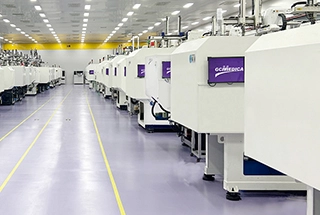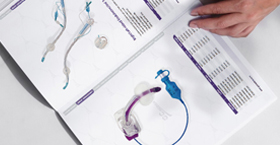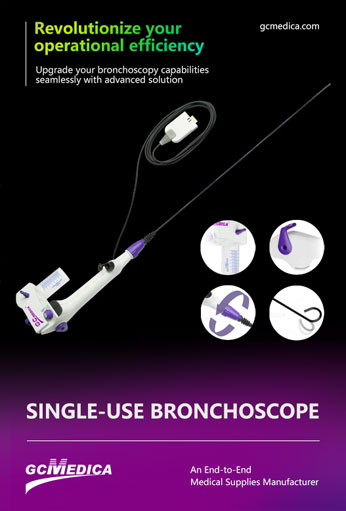Bronchoscopic technology has evolved to include both single‑use (disposable) and reusable bronchoscopes, each offering distinct advantages and challenges. Single‑use bronchoscopes are factory‑sterilized devices intended for one patient encounter, then discarded; reusable bronchoscopes are robust fiberoptic or video scopes designed for repeated use after high‑level disinfection and maintenance. The choice between these modalities depends on clinical priorities—such as infection control, cost containment, environmental considerations, and image quality—and institutional resources.
Comparison Table
| Feature | Single‑Use Bronchoscope | Reusable Bronchoscope |
|---|---|---|
| Initial Capital Cost | Low (per unit) | High (scope purchase, transport cases) |
| Per‑Procedure Cost | Fixed cost per device; no reprocessing | Variable: amortized scope cost + reprocessing |
| Infection Risk | Negligible cross‑contamination risk | Dependent on sterilization efficacy |
| Turnaround Time | Immediate availability; no downtime | Downtime for cleaning, disinfection, repairs |
| Image Quality | Improving; may lag slightly behind elite reusable models | High‑resolution optics/video chips |
| Durability | Single procedure only | Hundreds to thousands of uses (with wear) |
| Maintenance & Repair | None | Regular maintenance; costly repairs possible |
| Reprocessing Requirements | None | Requires central processing unit (CPU), time, staff training |
| Environmental Impact | Increased medical waste | Lower waste but higher water/chemical usage |
| Portability & Storage | Lightweight; easy to stock; minimal storage | Bulk storage; careful handling; protective cases |
| Supply Chain & Logistics | Reliant on consistent disposable supply | Independent of supply chain once inventory is established |
| Ideal Clinical Scenarios | Emergency, isolation rooms, low‑volume sites, bedside procedures | High‑volume bronchoscopy suites, advanced interventions |
Detailed Discussion
Cost Considerations
Single‑Use: The per‑procedure expenditure is predictable, covering the disposable device and associated sheaths. There is no need for capital outlay on scopes or processing equipment, which can benefit smaller or resource‑limited centers.
Reusable: While the upfront investment for scopes and reprocessing infrastructure is substantial, high procedural volumes can amortize these costs over time, potentially yielding a lower per‑case expense in busy units.
Infection Control and Turnaround
Single‑Use: Eliminates the risk of device‑related infections due to human or protocol lapses during reprocessing. Immediate turnover between patients enhances throughput, particularly useful in isolation or emergency settings.
Reusable: Despite stringent cleaning protocols, lapses can occur, potentially leading to cross‑contamination. Reprocessing cycles introduce procedural downtime and require dedicated staff and facilities.
Performance and Durability
Single‑Use: Manufacturers have rapidly improved optics and maneuverability, yet some high‑end features—such as ultra‑fine angulation control or 4K imaging—may still favor premium reusable models. However, disposables avoid wear‑and‑tear degradation over time.
Reusable: Provide consistent high‑resolution imaging and robust mechanical performance, but scopes must be regularly serviced and may suffer fiber or chip damage, leading to repair closures.
Environmental and Logistical Impact
Single‑Use: Generates significant plastic and metal waste, raising sustainability concerns and potentially incurring disposal costs. Dependence on uninterrupted supply chains may pose challenges in remote or disaster‑stricken areas.
Reusable: Minimizes per‑procedure waste but demands water, detergents, and energy for cleaning cycles, contributing to environmental footprints in different ways. Storage and transport of scopes require space and careful handling.
Single‑use and reusable bronchoscopes each fulfill essential roles in modern respiratory care. Single‑use devices offer predictable costs, superior infection control, and rapid turnaround, making them ideal for low‑volume centers, emergency procedures, and immunocompromised patients. Reusable bronchoscopes deliver premium imaging, lower waste per case, and cost efficiencies in high‑throughput environments but demand significant capital investment and rigorous reprocessing. Institutions should evaluate procedural volume, infection‑control policies, environmental priorities, and budgetary constraints to select the optimal bronchoscopic platform or to maintain a hybrid inventory that leverages the strengths of both modalities.
| Single Use Flexible Bronchoscope > |

 Français
Français Español
Español Products
Products
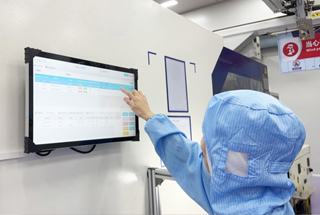
 About Us
About Us




